
IN AUSTRALIA
Moggill Koala
Hospital
Operated by the Department of Environment and Resource Management (DERM),
Queensland government, this hospital is involved in the
rescue of wildlife, with a particular focus on koalas, and
is the only state government-run wildlife hospital in
Queensland. Almost 1000 sick and injured koalas and other
wild animals come through its doors every year. The hospital
is staffed by two veterinarians and seven rangers, and has
the assistance of some 45 volunteers who work on a rotating
basis. Orphaned wild animals brought in are given over to
and raised by volunteer wildlife carers. Although not
generally open to the public, thanks to the cooperation of
the state government, AJWCEF has access to the hospital as a
site for practical training during our wildlife conservation
courses where participants get hands on clinical and nursing
experience with Australia's unique animals (marsupials and
monotremes).
 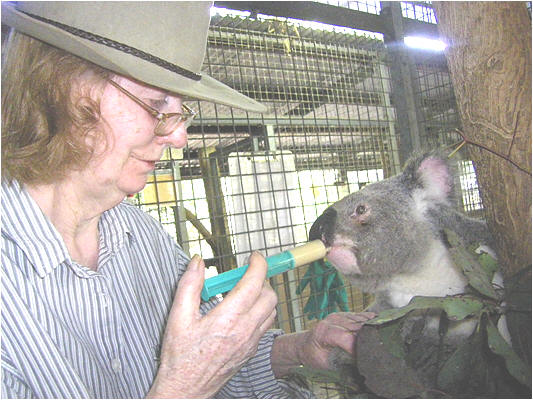 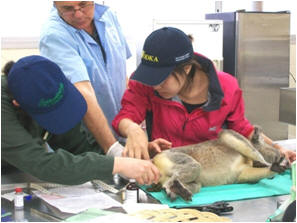
Moggil Koala
Hospital
Caring for a hospitalised koala
Participants in an AJWCEF
training course
David Fleay Wildlife Park (DFWP)
This park was established by Dr. David Fleay as a
educational facility to inform the public about Australia's
unique animals and the need to protect them. It is now
operated by the Queensland state government. The majority of
animals at the park are unique to Australia, with many of
the actually being endangered. AJWCEF also conducts part of
its training courses at this park, allowing participants to
take part in the practical matters relating to husbandry for
marsupials and monotremes as they are given explanations
directly from state government rangers. The park also
conducts captive breeding programs, returning some of these
animals to the natural environment. Some of the animals at
the park include:
- cassowaries (endangered)
- platypus
- Lumholtz tree kangaroos (threatened)
- mahogany gliders (endangered)
- Julia Creek dunnarts (endangered)
- greater bilbies (endangered)
- Proserpine rock wallabies (endangered)
- koalas (regionally vulnerable)
- dingoes
- freshwater and salt water crocodiles
- a variety of reptiles
  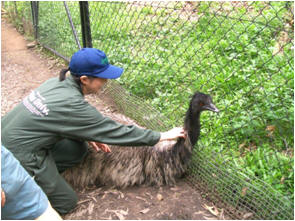
AJWCEF training course at DFWP: (left to
right) ring-tail possum, tree kangaroo, emu
Ipswich Koala Protection Society (IKPS)
The forerunner of this society was
established in the city of Ipswich, Queensland, in October
1994, taking on its current name in 2000. It is a group of
enthusiastic volunteers who rescue, care for and protect
wildlife. Its main activities include:
- conservation and restoration of
wildlife habitat
- wildlife rescue (24-hour/day wildlife
ambulance service)
- raising of orphaned wildlife and
returning them to the wild
- community education regarding
wildlife protection
- surveys and advice regarding wildlife
protection and habitat
- fund-raising to support the
abovementioned activities.
The IKPS and the AJWCEF have entered into
a cooperative agreement to advance wildlife protection
activities.
  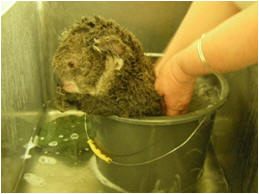
IKPS
vice-president explains Wildlife
ambulance
Caring for a rescued koala
the society's activities
Institute of Continuing and TESOL
Education (University of Queensland)
The oldest university in the state of Queensland, the
main campus of the University of Queensland is located in
the state capital of Brisbane. It was ranked in the top 50
universities in the world for graduate employability by the
2008 Employer Review, which contributes to the
Times Higher Education - QS survey analysis. Over 38,000
students, including 7500 exchange students from over 120
countries around the world, study at this university. The
campus itself is also known for its beauty. ICTE-UQ, which
has its office at the main campus in the suburb of St Lucia,
is a government registered and accredited English school the
provides high quality English language education. In
partnership with the AJWCEF, ICTE-UQ plans and conducts the
Australian wildlife protection study tours.

 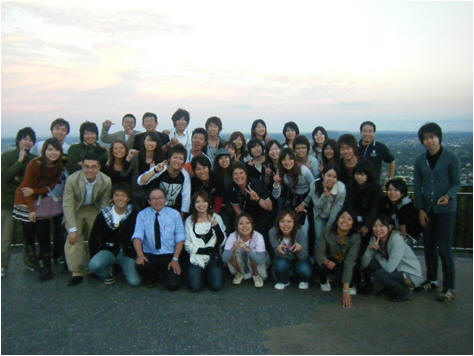
University of Queensland St Lucia campus
A study tour group from Japan
main campus, St Lucia
IN JAPAN
Nippon
Veterinary & Life Science University (NVLU)
The Nippon Veterinary & Life Science University (NVLU) is
Japan's oldest, private veterinary school having originally
been established in the Otowa district of Bunkyo ward,
Tokyo, in 1881. Later, the university merged with the Nippon
Medical School. Presently, the Faculty of Veterinary Science
includes the Department of Veterinary Medicine and the
Department of Veterinary Nursing and Technology, while the
Faculty of Applied Life Science incorporates the Department
of Animal Science and the Department of Food Science and
Technology, with each department equipped to provide
opportunities for doctoral studies. There are approximately
150 staff members, around 1500 students undertaking
undergraduate and post-graduate studies and over 16,000
alumni; although small in scale the university boasts a
shining tradition as a seat of learning. The university is
also involved in international collaboration in education
and research through various academic exchange
agreements that it has concluded with universities overseas.
Activities in the areas of short-term researcher and student
training, student exchanges and overseas practical training
for undergraduates take place under a collaborative
agreement between NVLU and the University of Queensland. The
Japan Office of the AJWCEF is in the Laboratory of
Veterinary Anatomy of NVLU, providing support for AJWCEF's
wildlife protection activities in Japan.



NVLU
shield
Main entrance of NVLU Teaching hospital
and other buildings
TOP ←
|